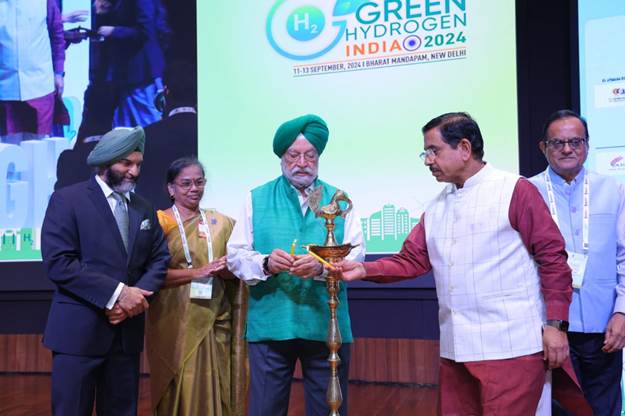Prime Minister Narendra Modi has outlined India’s bold vision to become a global leader in green hydrogen production, utilisation, and export, during the inauguration of the second International Conference on Green Hydrogen (ICGH-2024) in Delhi. Addressing global leaders and industry stakeholders via video message, Modi reaffirmed India’s commitment to combat climate change by positioning green hydrogen at the centre of the nation’s energy transition.
“India is fully committed to building a cleaner, greener planet,” Modi declared. “Green hydrogen offers the transformative potential to decarbonise key sectors like refineries, fertilisers, steel, and heavy-duty transportation. Through strategic investments and innovation, we aim to position India as a global hub for the production and export of this breakthrough fuel.”
The National Green Hydrogen Mission (NGHM), launched in 2023, is one of the strategies in driving the country’s green hydrogen ambitions. The Prime Minister emphasised that the mission will foster technological innovation, attract substantial foreign and domestic investment, and build the necessary infrastructure to scale green hydrogen deployment. “India’s non-fossil fuel capacity has increased nearly 300% over the last decade, and our solar energy capacity has seen an astounding 3000% growth in the same period,” he said.
Union Minister Prahlad Venkatesh Joshi highlighted the economic and environmental potential of the National Green Hydrogen Mission, which aims to draw ₹8 lakh crore ($953 billion) in investments and generate 600,000 jobs. The mission is expected to reduce India’s reliance on imported natural gas and ammonia, saving ₹1 lakh crore by 2030 and lowering carbon emissions by 5 million metric tons annually.
Hardeep S. Puri, Minister of Petroleum and Natural Gas, outlined ambitious targets for green hydrogen, including the production of 5 million metric tons by 2030. This target will require an investment of $100 billion and the development of 125 gigawatts of renewable energy capacity. “This initiative will contribute to decarbonising India’s economy and reduce 15 million metric tons of CO2 emissions annually, placing us on track for our net-zero emissions goal by 2070,” Puri stated.




















